20 Items For Emergency Cleaning Buckets
Looking to put together emergency cleaning buckets? Once the threat of a disaster has finally subsided, it’s time to pick up the pieces and do your best to move on. Unfortunately, sometimes, it can take a lot of repair work as well as a lot of cleaning to get your home completely restored to how it was before. I’ve updated this post because I feel it will be needed by many families after a disaster.
I’d like to make your life a little easier by ensuring that you have the right cleaning supplies stocked up beforehand.
These are 20 cleaning items that I believe you should have available for any emergency that may come your way. While I talk a lot about food storage in my blog posts, let’s not forget about emergency cleaning buckets and related supplies.
Posts You May Have Missed
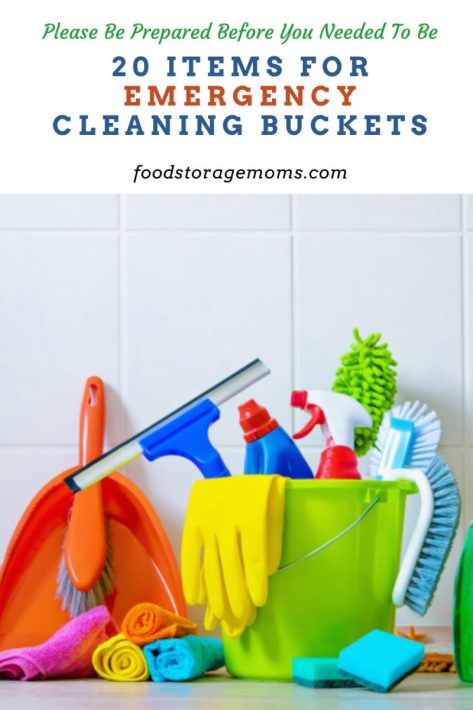
20 Items For Emergency Cleaning Buckets
1. Five-gallon buckets
To tackle any cleaning job following an emergency, you’re going to need at least a 5-gallon bucket, but be sure that it’s one that has a good durable handle. Not only can it be used to store a majority of your cleaning supplies, it can also help you make fewer trips when you’re moving smaller things.
For example, if you have to clean up after a fire, a large bucket will be especially important to have as you’ll likely be dealing with heavy, sooty debris. Preparing kits like this now will keep you safe later down the road. Don’t forget the lid! 5-Gallon Buckets
2. Dishwasher soap
Following an emergency, you’ll still have plenty of dishes to clean so that they don’t start piling up, so be sure to stock up on enough dishwasher soap. Personally, I like to use Dawn liquid detergent, but you can use whichever brand of dishwasher soap you prefer. When natural disasters hit, there is going to be a lot of cleaning up to do and dishwasher soap will be an important part of that process! Dawn Liquid Soap
3. Hand Soap and Hand Sanitizer
You’re going to want to have both hand soap and hand sanitizer on hand following an emergency because let’s face it, you’re going to be doing a lot of cleaning. And with all of that cleaning comes the potential for coming into contact with harmful bacteria. So, be sure to wash your hands frequently and use hand sanitizer when there’s no running water and soap available. Bars of Hand Soap
4. Clorox Liquid Bleach
Clorox liquid bleach is one of the most powerful cleaning agents available and it’s going to be your best friend following an emergency. Not only can you use it to clean surfaces, but you can also use it to disinfect water. Simply add 8 drops of unscented bleach per gallon of water, stir well, and let it sit for 30 minutes before using. In case you missed this post, Bleach: Everything You Need to Know
5. Sponges
You can never have too many sponges, or some other type of scrub pads, when you’re dealing with an emergency cleaning situation. They’re great for everything from dishes to floors to countertops. Be sure to stock up on both durable and disposable sponges so that you’re prepared for anything. Sponges
6. Clorox wipes
Clorox wipes are another essential cleaning item that you should always have on hand. They’re great for cleaning up messes quickly, and they can also be used to disinfect surfaces. Clorox Wipes
7. Cleaning Gloves
Cleaning gloves are a must when you’re dealing with an emergency cleaning situation. Not only will they protect your hands from harsh chemicals, but they’ll also keep them from getting too dry and irritated. I suggest some quality rubber or latex gloves. Some people are allergic to these products, so test out some brands and see how your hands deal with the combination of product materials and water. Cleaning Gloves
8. Non-latex gloves
If you have any type of latex allergy, be sure to stock up on non-latex gloves. These days, there are plenty of options available that will still protect your hands while you’re cleaning. Non-Latex Gloves
9. Pair of work gloves
Your hands are not something that you should ever take for granted. If you’ll be dealing with any heavy or sharp debris following a disaster be sure to have a few pairs of work gloves on hand. They’ll protect your hands and make the job a whole lot easier. Work Gloves
When speaking of hands and the need for gloves for protection, I always suggest you have a first-aid kit close by. Cuts and splinters seem to be a natural result of cleaning and organizing after an emergency. Hopefully, these gloves will make the need for injury treatment less frequent or severe.
10. Garbage bags
You’re going to need plenty of garbage bags following an emergency because let’s be honest, there’s going to be a lot of garbage to get rid of afterward. Be sure to stock up on both heavy-duty and standard garbage bags so that you’re prepared for anything. Don’t be afraid to go big by choosing the 33-gallon black trash bags because they’ll be the way to go when you have a lot to throw away. 33-Gallon Garbage Bags
I like the construction quality bags, but don’t get the huge ones since they’ll possibly end up being too heavy to handle.
11. N-95 Masks
If you’ll be dealing with any kind of hazardous debris following a disaster, be sure to have N-95 masks on hand. These will protect your lungs from harmful particles that could be in the air. Based on the events of the past couple of years, I’m sure we all have plenty of these. N-95 Masks
12. Window Cleaner
Any brand of window cleaner is something else you’ll want to have on hand so that you can quickly clean windows that may have become covered with gunk and debris dust during a disaster. This will hopefully help keep the dust out of your home once you can open the windows again. Window Cleaner
13. Spic & Span Spray Cleaner
Spic & Span spray cleaner is another cleaning item that I recommend you get your hands on. It’s great for cleaning up just about anything, and it can also be used to disinfect surfaces. Yes, you may want to consider spray bottles to keep on hand too, especially if you don’t have a particular cleaner you like. You can skip the toxic chemicals directly on your hands since you spray directly on the area needing to be cleaned. Spic & Span Spray Cleaner
14. Cleaning Rags
When you’re tired of spending a lot of money on paper towels and then throwing them away, invest in several dozen cleaning rags to tackle any cleaning job. They’ll last much longer and can be easily washed and reused.
I’ve really grown to love small hand towels and rags made out of microfiber materials. Although they tend to feel soft on tender skin, they do have a texture that is effective in cleaning tough spots and stains. Mark has found them to be especially good when cleaning windows.
15. Mop
You’ll be needing a mop to go with your 5-gallon bucket, especially if you’re dealing with cleaning up floors after minor flooding in your home. Flood waters bring a lot of dirt, bacteria, and other unpleasant things with them, and you’ll need the right tool for the job. Mop to Use
16. Clothesline
There’s a fair chance that your washer and dryer might not work following a disaster. Although this seems like the simplest needed item you could have in your bucket, it just might end up being one of the most important. Clothesline or Foldable Wooden Rack
Even if you wash the clothes by hand, hanging them up to dry is a necessary option.
17. Clothespins
In order to dry your clothes when the dryer isn’t working, you’ll need a clothesline and clothespins to assist you. Clothespins
18. Paper towels
Earlier I mentioned going with cleaning rags, but paper towels are still nice to have on hand. They’re great for cleaning up small messes, and they can also be used as makeshift disposable gloves. I wouldn’t be against making sure you have a scrub brush or scouring pads on hand. A large plastic garbage bag to throw all of these paper towels away might also be a vital item to keep in your bucket.
19. OdoBan
OdobBan baking soda is a powerful cleaning solution that’s great for removing odors from just about any surface or object. It’s especially useful following a disaster when you may be dealing with all sorts of unpleasant smells. This also works as one of the best disinfectants that I’ve found for cleaning. OdoBan
20. Bottles of Water to Drink
Besides having the right cleaning supplies, I thought that I’d also mention arguably the most important item that you would need following an emergency. Take the time to stock up on at least a 3-day supply of bottled water for everyone in your family. But don’t hesitate to have more on-hand, just in case. You can also use this bottled water for cleaning! Water storage is an important thing people often forget to consider.
What is the difference between a deep house cleaning and a regular cleaning?
A deep house cleaning is a thorough cleaning of your entire home, from top to bottom. This includes things like dusting ceiling fans, washing windows, washing blinds and shutters, cleaning floor moldings, and cleaning out the fridge. Regular cleaning is more focused on day-to-day tasks like vacuuming, doing the laundry, and washing the dishes.
How long does a deep house clean take?
A deep house clean can take anywhere from a few hours to a full day or more, depending on the size and condition of your home. If you’re doing it yourself, plan on setting aside a good chunk of time to get the job done right, or spreading it out over a few days so you don’t harm yourself or get discouraged with all you have to do. You may also want to enlist the help of family or friends to get the job done faster.
Final Word
These are 20 items that you need to have in your emergency cleaning buckets. They’ll help you get your house back in order and also go a long way in helping prevent your family from getting sick. Can you think of any other cleaning supplies that would be beneficial to have on hand? I’d love to hear from you in the comments down below! May God Bless this world, Linda
Copyright Images: Cleaning Supplies AdobeStock_323235861 by Alexander Raths

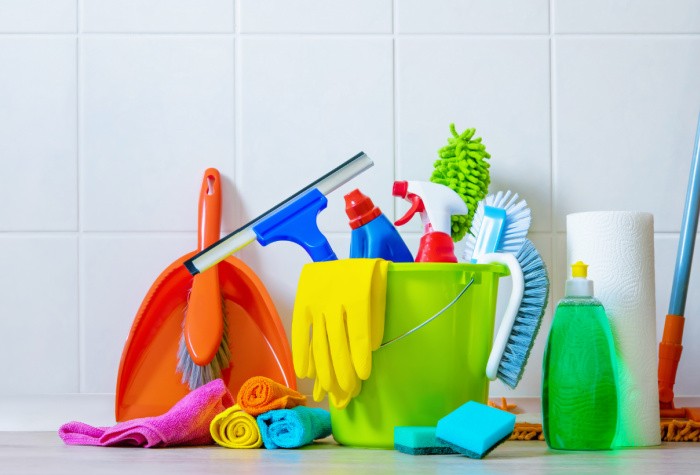

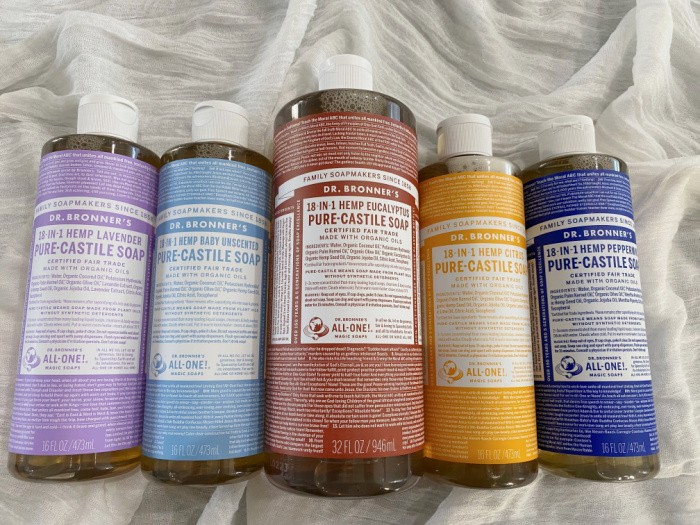
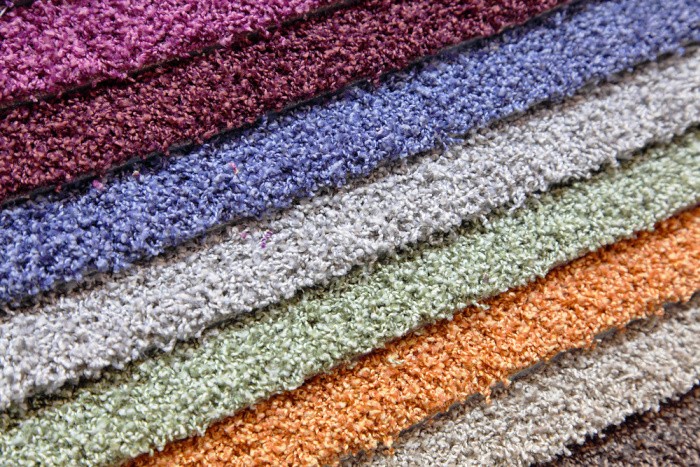
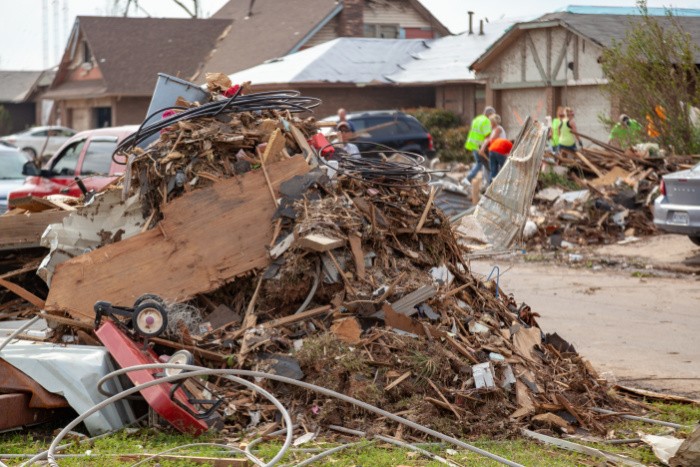
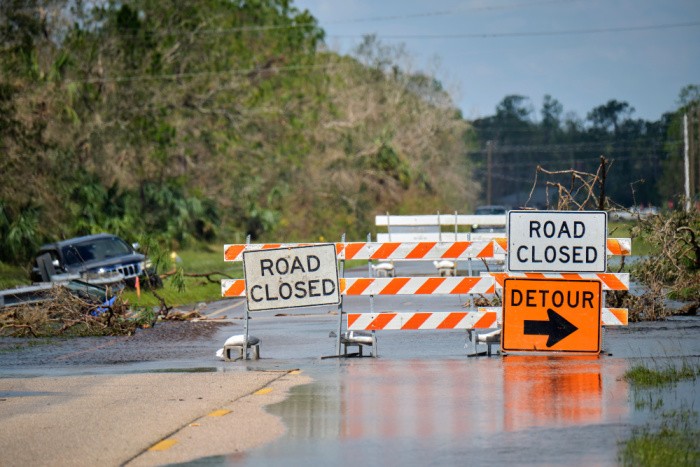
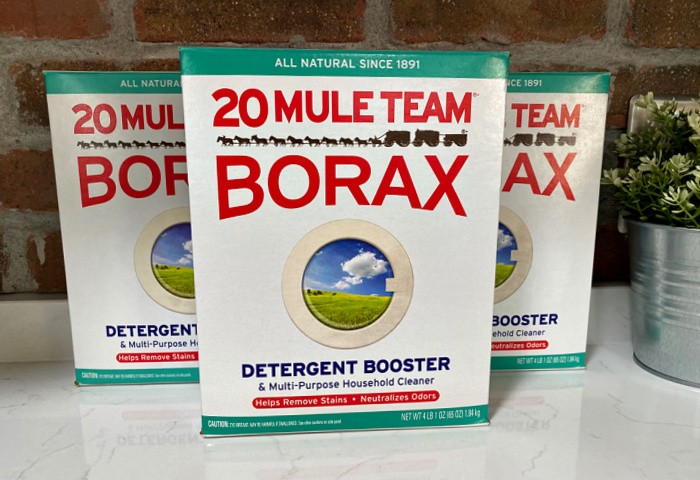
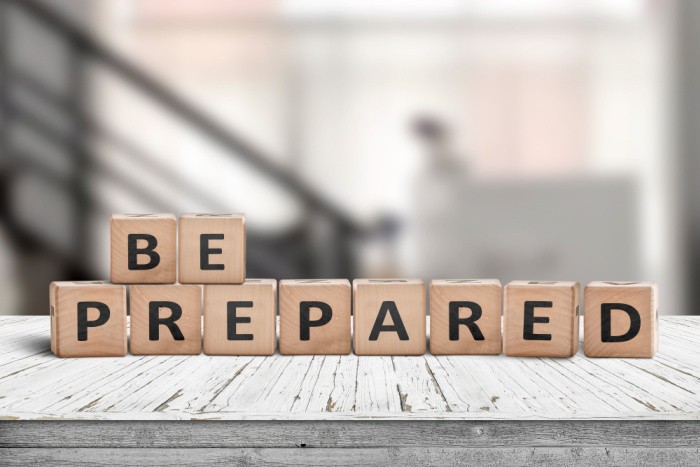













Wonderful list. I would buy several of the laundry bleach tablets, instead of having a lot of Clorox. It is much easier to store.
Here is the link to the United Methodist list. https://www.umcor.org/umcor/relief-supplies/relief-supply-kits/cleaning
Janet, thank you, I’m going to add it to my post. Linda
Hi, Janet, I think you were the one that told me about them. I have started stockpiling them as well. Great tip! Linda
Looks like a pretty good list Linda. Cleaned many a houses in my day too, it’s a great idea to bring your own supplies. The one thing that I like is a bar of Fels Naptha soap in a piece of nylon net. It’s a great scrubber/stain remover for clothes.
Have a good weekend:)
I set up a booth at an Emergency Preparedness Fair for toilet needs. I learned a lot on my research. I did the “2 bucket potty”, One for pee & one for pooh. In one bucket was cleaning supplies, like you would use in the bathroom. I included spray bottles, bleach, etc. My next task is to set up a cleaning bucket. Maybe that will be under some Christmas trees this year. I love helping my kids out with practical gifts. Thanks once again. Love love love your blog,
Oh Debra, this is a great idea! See how we learn from each other!!! I love this! Those would be great gifts for Christmas, I’m practical too! Love this comment! Linda
Hi, Linda. Because our rural farm is on a well and septic system, I’m pretty careful about when and where I use bleach but do keep it for those time when needed. I recently learned that bleach has a use by date because it changes from bleach to a salt over time.
“When Clorox® Regular-Bleach is stored between 50°F and 70F° and away from sunlight, it will maintain label strength of the sodium hypochlorite active for up to 6 months (at this point hospitals should replace it). After 6 months it starts breaking down into salt and water, but it will still work well for the home consumer up to a year. Since it’s always diluted before use, you can just use a little more. Beyond a year, it should be replaced because the rate of decomposition into salt and water speeds up, which is a big part of why it’s environmentally friendly.”
I checked my jug that I’ve probably had for 2 years, it was well past the date and no longer smelled like bleach. Now I buy a smaller bottle that I can use up before it degrades.
Hi Debbie, I buy small bottles of bleach as well because of the shelf-life. I’m looking into the shelf life of the tablets. I’m thinking they would be the same, but I will call the company. Great comment, Linda
Would love to hear what you find out about the shelf life of the bleach tablets. I had a bleach container
explode and run down my cabinets because I wasn’t paying attention to the expiration date so I no longer use it. But had no clue about tablets, it sounds easier.
Hi Kimmy, yikes you had a bleach container explode, wow, that’s the first time I have heard that could happen. It makes sense. It looks like Kathy Wilson has an answer for us about pool shock treatment crystals. Yay! Linda
P.S. I like to put liquid items in Ziplock Freezer bags. This saves on a mess if anythings breaks and gives me plastic bags, if needed. I always keep a few of these bags handy in the car in case anyone gets car sick!!!
Hi, Debra, I love freezer bags, they are stronger than the regular ones. Great tip for the car!! Love this comment! Linda
The list is very comprehensive. The bucket could be a fun wedding shower gift, maybe ask each guest to bring one item to fill the bucket. At some point every new bride and groom will need to clean their abode!
About the Clorox. It does kill germs but not molds. For molds you need a fungicide. They now have some you can buy at a Menard store or even Lowe’s or Home Depot. This is very important! Clorox can bleach the surface so you THINK the mold is gone but it isn’t!
I thought it did kill mold, thanks for the tip. I will check for some fungicide. Great comment, Linda
Correct, bleach can send the mold spores into the air
Hi Marilynne, hopefully, we are only cleaning up sewage. When I was a realtor if the inspector found mold we hired specialists to clean it up and would clear the house for moving in. I will not mess with mold. No way, great comment, Linda
I have been saving Kitty Litter buckets for years. My main use is using cleaned bleached buckets for herbs and vegetable growing. I drill holes in the bottom for drainage and sometimes add small stones to aid that drainage. My son-in-law sort of teased me about it until one day he realized he could use them in the garage for storage of all sorts of things. He asked me” Do you have any without holes?” Of course I do! I have one full of all different kinds of wrapped bath bars in the event of soap shortage. During Hurricane Irma we filled 10 kitty litter buckets with well water to aid in hand washing, dish washing, cloths washing and any other type of cleaning if needed. We also filled five for water for the pigs and chickens. Normally we would not use it for the animals drinking water, but in a pinch it did just fine and they came through with flying c0lors. The possibilities are endless, free, and keeps them out of the land fill.
Hi Carolyn, we can never have too many buckets!!! LOL! Great reminder to people to keep all bucket and load up on soap! LOVE this! Linda
I store packets of sodium hypochlorite POOL SHOCK TREATMENT in the small plastic bags. It is my understanding that you can put one TEASPOON of the crystals into one GALLON of water, and you have the equivalant of a 5% Clorine solution, which is about equal to the liquid Clorox you buy at the store. This is much easier to handle, and transport in powder form, than when it is in liquid. You can do the math, but the powder form lasts for years, in a cool spot, and away from light, and anything reactive. There is a ton of info online about this…
Hi, Kathy, this is great to know. I have a pool but I only have the pool tablets. I’m on it, this is AWESOME to know, thanks for sharing! Linda
Make sure you read up on all the gotchas with pool shock. Plastic containers are key since glass is too easy to break and metal containers will be eaten away by the chemicals. I store the sealed bags of pool shock in a small plastic container, along with chemical resistant gloves and directions for mixing the powder into water to make bleach and then diluting for disinfection sprays or water purification. Googles are stored on top of the bucket along with a second copy of the directions. I also have lots of plastic measuring spoons so I can use one with the pool shock and then leave it with the gloves for use again later.
Thank you for this great comment, my pool shock is stored in plastic buckets! I love tips like this, thank you! Linda
POOL SHOCK is found in the swimming pool treatment department at all Walmart Stores, and many other places…
Kathy, this is awesome! Linda
This site has some excellent comments and reminded me to check on something I also have stored for emergencies. After learning that Bleach has a six month shelf life I ordered some packets of calcium hypochlorite which I was planning on using if I needed to purify water. I had forgotten about it until I read Kathy’s statement about Pool Shock. Knowing it can be corrosive I sealed the packets of dry granules first with my Foodsaver vacuum sealer bags and then placed them into a Seal Tite plastic container with four self locking sides. When I just checked I found while the packets of calcium hypochlorite granules are still loose and dry in their original packaging their has been some reactive process going on. The Foodsaver bags have expanded and are sticky to the touch and the inner seal of the plastic Seal Tite container has basically degraded. It has been over two years since I stored this product and it has been in a cool dark environment. I guess I need to research another way to store this product. I know plastic would be the preferred method and nothing metallic.
Hi, Carolyn, I’m glad you mentioned this, I have pool shock but it’s stored outside and I have a salt pool that uses very little pool shock. I am going to call the Clorox company on Monday or Tuesday and see if I can talk to someone. I would order a water purifier like a Big Berkey or even the Berkey Sports Bottles, the Life Straw has a better product out now than they did in the beginning. I’ll keep you posted. I’m so glad you shared the tip on the sticky FoodSaver bags. Linda
I do have a Big Berkey and have bought each of my adult children one as gifts over time. I also have a couple of the Berkey Sports bottles. Even with clean water we will still need a disinfecting source hence storing of the calcium hypochlorite. I opted to try and store it inside in a sealed cool environment rather than outside since I wanted it for long term storage and not something that I would be using right away. Luckily, the original packets seem to be Ok even though some of the product has some form of outgassing.
Hello again Linda, I checked my source for How to make chlorine bleach at home. It is supposedly taken from an Army manual and sounds legit. I thought you might be interested in the article. I bought Zappit 73 Pool Shock as recommended from Amazon since it has a 10 year shelf life when stored in a cool, dark place. The link to the site is https://tacticalintelligence.net/blog/how-to-make-chlorine.htm
Hi, Carolyn, I’m all over this, thank you!!! I’m going to order the Zappit 73 Pool shock. Thanks for the links and great tip!!! I love it! Linda
Hi, Carolyn, we need all of it, don;t we? We have to be prepared for whatever comes our way. Thanks for the link you found above. I’m on it. Linda
I keep baking soda (and washing soda) and vinegar for everyday cleaning. Also, I don’t buy hand soap; all our pump bottles for hand soap are filled with diluted Dawn, even in the shower. If it works on oil-slimed little duckies it will certainly clean grubby teenagers & stinky husbands!
Hi Linda, wow, I never thought about diluting Dawn, that’s all I buy. My grandson got the family started washing hair with baking soda and vinegar. Great tip!!! Linda
It seems like your kits are all very wide in scope, but while hygiene seems to be the main use and purpose for these kits, I would consider adding duct tape, WD-40 and light machine oil, and products (Pledge, Murphy’s Soap) to help clean and restore furniture and possibly wooden stair rails and the like.
Anything metal will benefit from a light scrubbing from steel wool, brushes or even a simple S.O.S. pad and an old toothbrush. Then if applicable a light coat of oil or even petroleum jelly. You can protect metal with Vaseline or even Chapstick. The idea is to prevent rust and pitting on hinges, screws, locks and anything made of any kind of metal. In Florida you can just clean and wipe some things while other stuff like car wheels or tools can almost rust away in a few months. Humidity is metals worse enemy.
And the polishes would bring back and protect delicate wood that has been exposed to moisture, dirty water and other grime. This would be appreciated by those who own older antique furniture or anything made of wood such as guitars or other finely made items.
These additional items might grab the interests of guys who’d like to help and wouldn’t mind doing those types of tasks…. better pack some candy bars, peanuts and beef jerky to keep them a while 🙂
Hi, Frank, I love this comment, I should write a post just about these items. I forget I live in such a dry desert compared to the humid areas in the south. Great comment, thank you! Linda
No problem. You and your fans, friends and/or subscribers always have good information. Survival isn’t just about guns or security or house cleaning and laundry or medical concerns, but a combination of all these things. We lost power and water when Irma hit us and again, the main concerns were basic and the main need was for the essentials and the hope to be comfortable.
I know we did alright in preparing, but it could be better next time. And now I have that experience to learn from and to help my family and myself to make better preparations by better planning and implementation. The one thing we lacked were munchies, but the person who shops for food here doesn’t buy many snacks. Now I will make sure we have things to nibble on and keep up our spirits.
Frank, the candy bars, peanuts and jerky rock! Linda
Don’t pack the consumables with the chemical products, please. The food will take on the taste of the chemicals. (Not to mention if one of them spills your thoughtfulness will become a disappointment at best, a poisoning at worst.) Tie them in a bag to the handle, so they hang outside the chemicals, perhaps?
Hi Cass, I was thinking of bringing a box or two of Snickers candy bars from Costco, cases of water, small pre-packaged peanuts and jerky to homes to help with clean-up. Thanks for mentioning that, some people might not realize the danger of packing the treats in the buckets when mailing them. Great comment, Linda
After a fire and of course water damage from the fire department fighting the fire at one of our medical buildings the insurance company sent ServicePro to clean up. I noticed they were using Odoban to get rid of the smoke smell and other odors. I have added this to my clean up bucket. It comes in several different scents now. Sams Cllub carries this and I am pretty sure I have seen this product on Amazon.
HI Deborah, oh I love this comment, I am going to add this product to my emergency cleaning buckets! I love this!!! Thank you! Linda
I follow a channel called Empty Hammock, He is a professional builder/carpenter. This is the product he uses and recommends.He has a video on why to not use bleach for mold clean up and explains it clearer than i can. here is a link. info is just after 4 minute mark. whole video is not long and worth the watch and a like…youtube.com/watch?v=-AwDf5s3NRM&t=264s concrobium.com/pro/products/mold-control/
Hi Denise, thanks for sharing. Linda
Linda:
Since I don’t use a Dishwasher I don’t have any use for dishwasher soap. I buy regular dish soap and keep a good supply of that. as for many of the other things we always keep a supply of these items so that we will not be without them when we need them. I have been cleaning my pantry room and have been putting things in containers with lids to keep them safe. I am also cleaning up what will my pantry room and I will put shelves that I will but things like boxes and things like pancake syrup and ketchup on. Then I will get shelves that I can put up to keep can’s in and I can fill them up and they will keep the canned food together so I don’t have to go hunting for the cans when I need them.. I am getting a little smarter in my old age.
Hi Jackie isn’t it so nice after it’s done? Having a clean and organized pantry brings me so much joy! Good job! Hugs from Utah, Linda